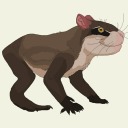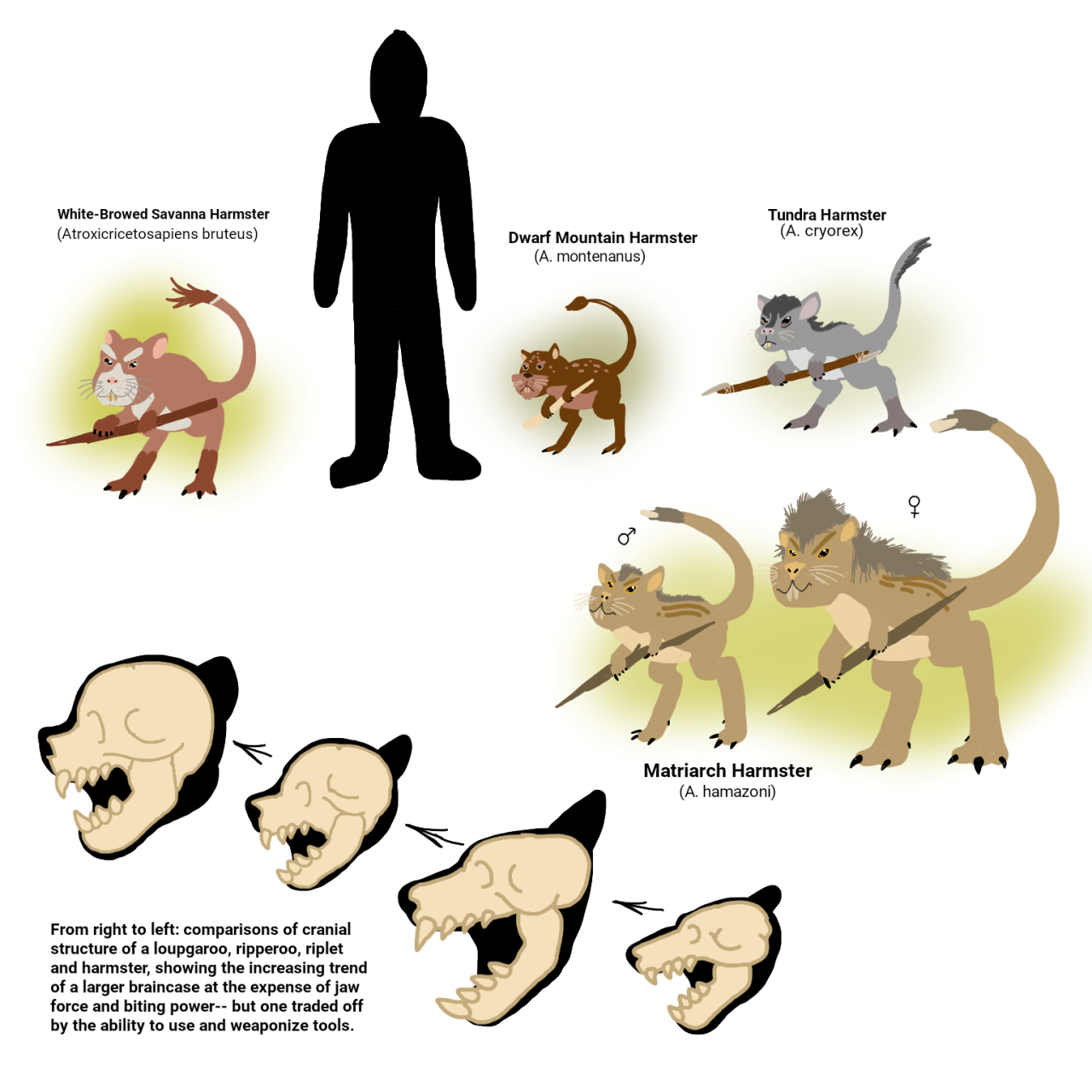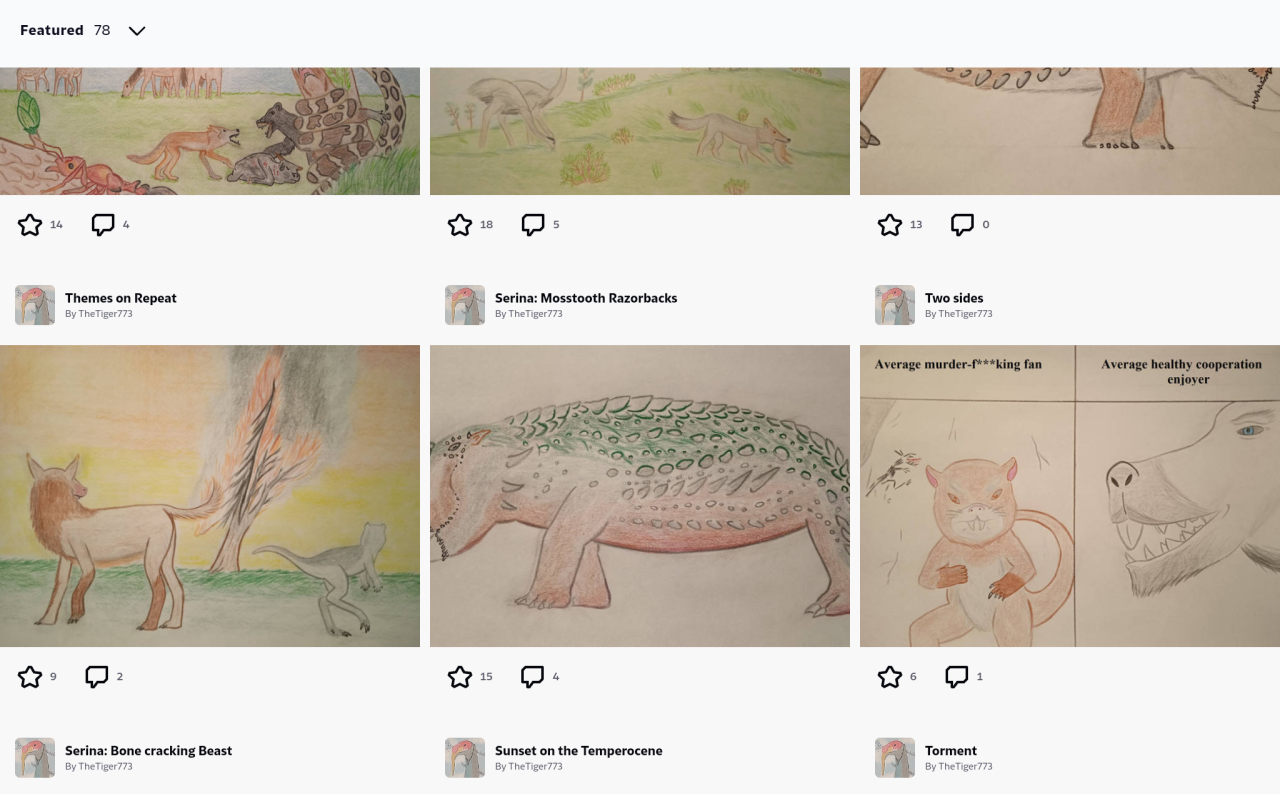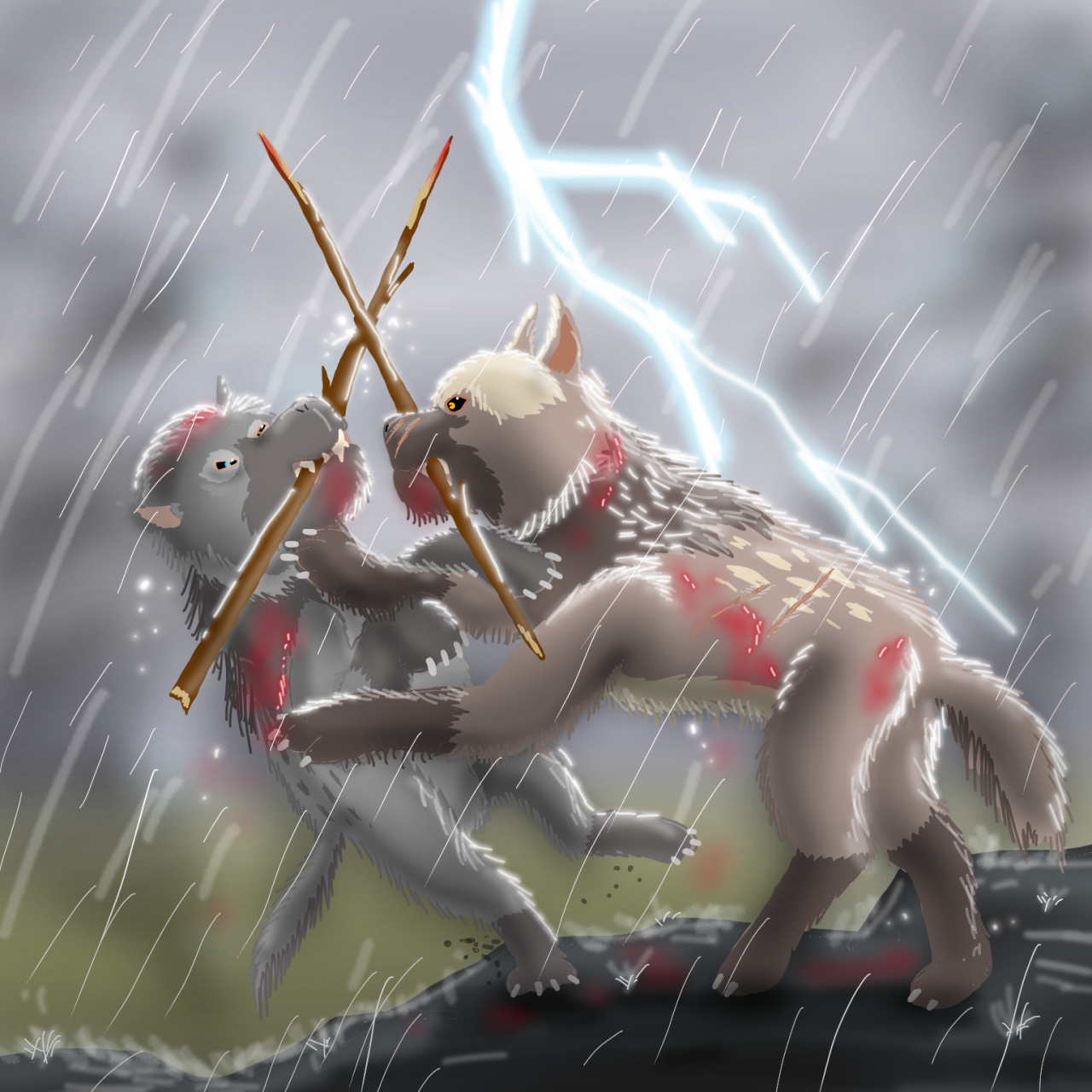The Middle Glaciocene: 115 million years post-establishment
Ascent of Ham: The Dawning Of Sapience
It is 115 million years since the coming of life on HP-02017.
Countless generations of hamsters of all shapes and sizes have since come and gone. The world has changed a lot since the beginning, and new forms have risen to conquer new land and fallen when they could not adapt to changing environments, especially the unpredictable fluctuations of warm and cold climes now as the Glaciocene approaches its end. And here, on the plains of the Arcuterran savannah, one such creature has emerged unlike anything before seen.
It is early morning on the temperate grassland. Beta, hanging high in the sky since last evening, is now joined by the rising of Alpha, with the ruddy glow of Beta-twilight soon giving way to a brilliant orange light. The creatures of the daytime begin to stir, and emerge from their shelters to feed in the sunrise: a sunrise that to some, with nature red in tooth and claw, will be the last one they ever see.
Among these early risers are a large plains ungulope and her young calf: at barely a month old, the youngster is still dependent on its mother. She in turn is quite protective of her infant: as she heads out into the tall grass of the plains to graze, she lets out a few high-pitched whistles to ensure her young stays close by, which the calf responds to with a series of chirps to assure her of its proximity.
But she hears a sound of breaking twigs, the crackle of footsteps, and most tellingly, the smell of fire and smoke, one ignited without lightning, and freezes in high alert. At once she knows right away they are being stalked.
Suddenly the cracking noises are from all directions as plumes of smoke begin rising one after the other from the tall grass: at once both mother and calf panic and begin to flee. The mother ungulope gallops away from the source of the sound, and away from the fire that most living things inherently fear, making a rapid set of chirps to guide her young to her. But the noises disorient it: they are coming from different sources– multiple assailants having them surrounded– and it is not long until the calf becomes separated from its mother. Frightened and lost, it bolts from the unseen assailants hidden in the tall grass, as fast as its little hooves can carry it, and away from the flames that have begun to scorch the dry grasses behind it: only to blunder straight into a trap.
A pointed branch, gnawed perfectly into a lethal tip, pierces the ungulope calf’s flank, causing it to squeal desperately in pain and terror. Its mother hears its distress, and rushes to its defense– but another such branch strikes her painfully in the shoulder. And as another one hits her in the flank, she has no choice but to flee: abandoning her wounded calf, who cries vainly out into the distance as it watches its parent bound out of sight, away into the smoldering grasses of the flames that by now have spread. Its desperate cries soon draw the attention of the assailants, who turn to it with eager eyes, and before the wounded calf could muster the last of its strength to struggle to its feet, the hunters fling themselves from the cover of the grass onto their victim, and begin to devour it alive.
A chorus of screams of agony break the morning silence as the ungulope calf struggles uselessly against the pointed claws and tearing teeth slowly stripping it of hide and flesh: and not only by weapons granted by nature’s design, but by sharp wooden spears, their ends splintered points that jabbed cruelly into the ungulope calf to further its suffering. Wooden spears that were purposefully crafted with great care and precision, to serve but a single specific purpose– to be an instrument of dealing death. And some of these sticks smolder with flame, the source of the sudden bushfire, as the attackers have managed to capture and command this primordial force, some of them now using the fire to further taunt the calf, searing its flayed flank to draw more agonized cries, a display met with wild whoops and squeaks from the bloodthirsty audience.
And with each painful squeal the assailants grow ever more excited, hopping up and down and shaking their spears as they joined in the melody of death with ever-more eager shrieks and whistles. The sound of their prey’s pain meant food. The suffering of their victim meant life for them. And it was something that brought them twisted joy. For this was no mere, ordinary predator that had claimed this young ungulope, but a species that for the first time was capable of understanding its actions, and even purposefully reveling in them. A species with intention, and the capacity to operate beyond natural limits. A species aware of itself and its world, complex enough to think beyond the scope of a typical animal. A species capable of genuine malice.
A species that, arising 115 million years from an unassuming lineage, was HP-02017’s first sapient: the harmster.
Descending from the riplets of five million years prior, the origin of the harmsters goes back to the giant, plodding herbivores known as drundles, which, on the continent of Mesoterra, became small, cursorial bipeds called podotheres. Omnivorous in nature, some of these podotheres increasingly became more carnivorous, with the lineage of the loupgaroos becoming full-fledged predators that hunted living prey. Of these, one genus known as the ripperoos would become vicious, intelligent apex predators on Mesoterra as to eventually displace their smaller descendants, the riplets, to leave the continent via a land bridge. Over time the riplets would develop increased cooperative skills and discover the use of fire, setting the stage for their ascent into the modern harmster.
As evolution is a gradual process slowly accumulating changes over eons, it is impossible to say exactly when the harmsters attained sapience: but undoubtedly by five million years earlier the riplets’ discovery of fire had been a catalyst for even faster changes that set a cascade leading to bigger brains and more complex behaviors, ultimately producing a species that crossed the threshhold of self-awareness.
This species would be the common ancestor of four extant harmster species: violent and warmongering as they are, new subspecies arose here and there and were quickly snuffed out of existence by their kin– at some point, as many as twelve harmster species existed at once, jousting over territory and resources, and their expertise at dealing death made no exception for their own kind, and soon whittled down the number of species to a fraction of those that didn’t directly compete with one another: at least, for the time being.
Most abundant are the white-browed savanna harmsters (Atroxicricetosapiens bruteus), hunters of the plains that prefer the use of branches sharpened into spears as their main weapons, while in higher elevated lands of Arcuterra, smaller dwarf mountain harmsters (A. montenanus) make a living, notable among their kind in being less intraspecifically-hostile, and opting the use of tools made from rocks or bones due to the sparser trees of the highlands. In the temperate jungles live the matriarch harmsters (A. hamazoni), distinct by their pronunced sexual dimorphism with the females being larger and much more dominant than the males. And most advanced of them are the tundra harmsters (A. cryorex): not only do they rely on tools available in the environment, but actively craft more complex weaponry such as spears tipped with points of stone or teeth, and it is this species among the four that has begun a more-developed level of cultural growth: and a primitive, militaristic form of government headed by the strongest and fiercest.
Pressured by evolution toward fecundity, ferocity and intelligence, the end result was a species that seemed to be the worst sapience had to offer: a species that appears to combine the most dreadful aspects of some of Earth’s cleverest species– the sadism to their prey exhibited by orcas, the brutal tribalism and amoral warfare displayed by chimpanzees, and most frighteningly the advanced tool use and arrogance disturbingly similar to the very species that had seeded life onto this world untold eons ago– humans. With all this wrapped up in their hamster-like tendency to breed in great numbers and kill and eat their own kind, the arrival of the harmsters would herald a turning point in this planet’s timeline: one that would make this world quite less of a paradise.
▪▪▪▪▪▪▪▪▪▪













